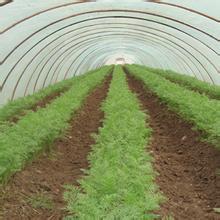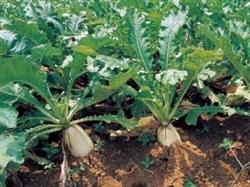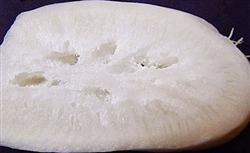Cultivation techniques of carrot in spring

1. Variety Selection and Sowing Quantity Spring sowing varieties should be selected with bolting tolerance, better quality, higher yield and middle and early maturity. For example, Xinheitian 5 inch, Hongxin 4, and Chunhong 1 belong to this type. Sowing rate: 0.75kg for drilling and 1-1.5kg/mu for sowing. 2. Cultivation techniques 1. Determining the suitable sowing time Carrot is easy to bolt early in spring sowing; too late sowing leads to a large number of abnormal roots at the high temperature period above 25℃, and the suitable temperature for carrot fleshy root expansion is 18~25℃. According to production experience, under the premise of selecting bolting resistant spring sowing varieties, sowing can be carried out at the average temperature of 10℃ per day and 7℃ per night. Generally, the northern part of North China is sown in early April, and the southern part of North China is sown in late March; Central and South China can be sown in early March; Northwest, Northeast and other cold areas can be sown in late April to early May. 2. Soil preparation, fertilization and seed soaking Carrot is a root vegetable crop. It should choose sandy loam or loam with deep soil layer, fertile soil and good irrigation and drainage. Deep ploughing and fine harrowing before sowing, with tillage depth not less than 25cm. Combined with ploughing, 5000kg decomposed farm manure, 15kg phosphorus potassium fertilizer and available nitrogen fertilizer were applied per 667m2. Carrot seeds are not easy to absorb water and ventilate, coupled with low ground temperature in spring sowing, resulting in slow germination and emergence of seeds. In order to promote early germination and emergence, seed soaking should be carried out before sowing. The method is to soak seeds in warm water at 30~35℃ for 3~4 hours, remove them and pack them with wet towels or bags to keep them moist. Put them at 25~30℃ for germination for 3~4 days, stir and wash them regularly. After 80%~90% of seeds are exposed to white, they can be mixed with wet sand for sowing. After sowing, they can be covered with a thin layer of soil evenly, covered with plastic film, or replaced by grass or straw. 3, field management after sowing to keep the soil moist, should be immediately watered or watered after suppression, to create conditions conducive to seed germination and emergence, seedlings out of Qi in the windless morning to remove the cover. During seedling period, seedlings were planted twice, the first time was carried out at 1~2 true leaves, and inferior seedlings, weak seedlings and over-dense seedlings were removed; the second time was carried out at 3~4 true leaves, and seedlings were fixed after thinning, and the spacing between fixed seedlings was 9cm and the row spacing was 15~18cm. Intertillage weeding is the key to high yield of carrots, but also herbicides can be used, commonly used 50% prometryn 450kg, 75kg of water weeding. In addition, pay attention to cultivating soil during intertillage to prevent the top of fleshy roots from exposing the ground to form green shoulders. To make carrot yield, the whole growth period should be watered 1~2 times. The first time was carried out 5~7 days after seedling identification, and 3kg ammonium sulfate, 3 kg phosphorus and 3kg potassium fertilizer were applied per 667m2 in combination with watering. The second time, when 8~9 true leaves were grown, i.e. the initial stage of fleshy root expansion, was also the period of maximum water requirement. Combined with watering, ammonium sulfate was applied at 7.5 kg/667m2, and phosphorus and potassium fertilizer were applied at 3.5 kg/667m2. Spring carrots are sown in late March, generally harvested from mid-to-late June to early July, and can also be harvested in time according to market demand. When mature, the leaves no longer grow, no new leaves are seen, and the lower leaves turn yellow. If there is 0~3℃ cold storage, storage after harvest, can supply the whole summer. 1. Variety Selection and Sowing Quantity Spring sowing varieties should be selected with bolting tolerance, better quality, higher yield and middle and early maturity. For example, Xinheitiancun, Hongxin 4 and Chunhong 1 belong to this type. The suitable sowing time for carrot is early sowing and easy bolting; too late sowing leads to large number of abnormal roots at the high temperature above ℃. According to the experience of production, under the premise of selecting bolting resistant spring sowing varieties, sowing can be carried out at the average temperature of day and night. Generally, sowing in the north of North China is at the beginning of the month, and sowing in the south of North China is at the end of the month; sowing in central and southern China can be carried out in the first ten days of the month; sowing in cold regions such as northwest and northeast can be carried out from the end of the month to the first ten days of the month. Soil preparation fertilization and seed germination carrot is a root vegetable crops, should choose deep soil, fertile soil, irrigation and drainage of good sandy loam or loam. Deep ploughing and fine harrowing before sowing shall not be less than. Combined with ploughing, every application of decomposed farm manure, phosphorus and potassium fertilizer and available nitrogen fertilizer. Carrot seeds are not easy to absorb water and ventilate, coupled with low ground temperature in spring sowing, resulting in slow germination and emergence of seeds. In order to promote early germination and emergence, seed soaking should be carried out before sowing. The method is to soak seeds in warm water at ~℃, put them in wet towel or bag to keep them moist, place them at ~℃ for germination for ~ days, stir and wash them regularly. After the seeds are exposed to white, they can be mixed with wet sand for sowing. After sowing, cover them with thin soil evenly and cover them with plastic film. Grass or straw can also be used instead. Field management After sowing, keep the soil moist, water immediately or after suppression, create conditions conducive to seed germination and emergence, and remove the mulch in the windless morning after seedling emergence. During seedling period, the second seedling order is to remove inferior seedlings, weak seedlings and over-dense seedlings when ~ leaves are true; the second seedling thinning is to determine seedling spacing and row spacing when ~ leaves are true. Intertillage weeding is the key to high yield of carrots, but also available herbicides, commonly used prometryn, weeding water. In addition, pay attention to cultivating soil during cultivation to prevent the top of fleshy roots from exposing the ground to form green shoulders. To make carrots fruitful, water and topdressing should be applied ~ times during the whole growth period. The second time is carried out after the seedling is fixed, and the watering is combined with each application of ammonium sulfate, phosphorus and potassium fertilizer. The second time is at the beginning of fleshy root expansion, which is also the period of maximum water demand. Combined with watering, ammonium sulfate, phosphorus and potassium fertilizer are applied every time. Spring carrots are sown in late month, generally harvested from late month to early month, and can also be harvested in time according to market demand. When mature, the leaves no longer grow, no new leaves are seen, and the lower leaves turn yellow. If there is ~℃ cold storage, storage after harvest, can supply the whole summer.
- Prev

Management techniques of spring radish in May
Planting spring radish in early spring is a way to get rich with small investment, short cycle and high benefit. It can not only supplement the off-season supply of vegetables and increase the variety of flowers and colors, but also provide a good stubble for later cropping. The main cultivation techniques are introduced as follows: 1. The selection of good varieties should generally choose high yield and quality.
- Next

Three ways to avoid the hollowness of radish
The hollow radish affects the yield, quality and economic benefit of radish. But there are also ways to prevent and control radish hollowness effectively. Pay attention to balanced water supply: the requirement of soil water content in the growth and development stage of radish is generally 60%-80%, especially in the expansion period of radish fleshy root, when the soil water supply is insufficient or waterlogged during drought and drought.
Related
- Where is it suitable to grow horseradish in China? it is expected to see the middle altitude horseradish in Alishan.
- How to prevent tomato virus disease reasonably? (Control methods included)
- Many people like to plant towel gourd on the balcony. What are the main points of this method and management?
- What crops can chili peppers be mixed with?
- Fertilization techniques and matters needing attention in Tomato
- What are the grafting techniques for peach seedlings in spring?
- Harm and control methods of root swelling disease of Chinese cabbage
- What are the pests of sweet potatoes? How to prevent and cure it?
- Symptoms, causes and Control methods of navel Rot in Tomato
- The cause of "Cucumber rotten bibcock" in Farmers' planting Cucumber and its Control Plan

